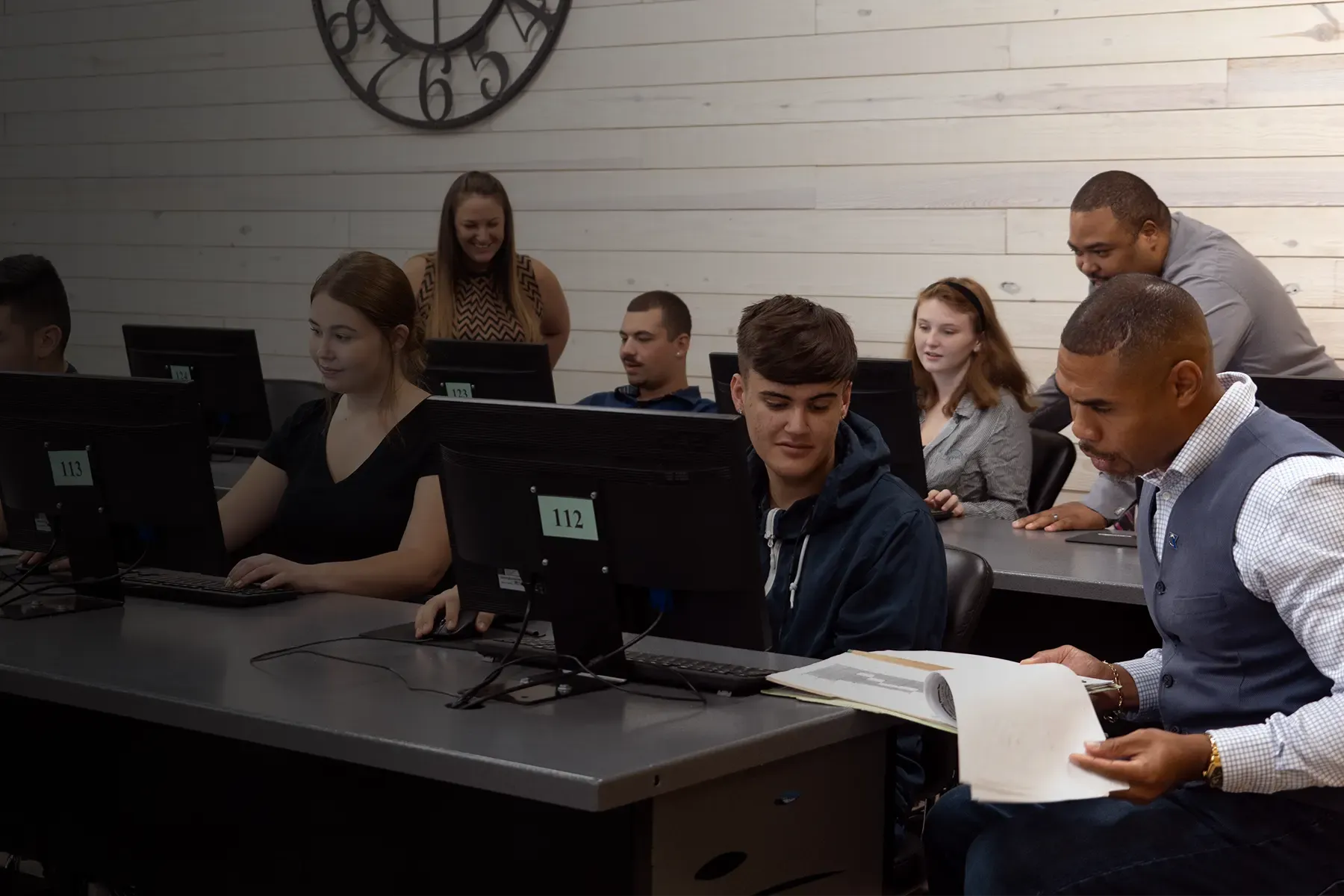The SAT is one of the most well-known national standardized tests, with over two million students taking it every year. Recently, the College Board announced that the SAT is undergoing some changes starting in 2024. As students and parents, it’s essential to understand these changes and how they will affect you or your child.
The team at Rose Academies is here to talk about the most recent SAT changes. We will talk about how the SAT is changing and how that affects studying and taking the SAT. We will also talk about tips for approaching the newest iteration of the standardized test.
As an exemplary charter school in Tucson, Rose Academies strives to provide personalized educational solutions to help you reach your goals. Contact us today to talk about our programs and enrollment!
What’s Different About the New SAT?
The new test will keep the original 1,600-point scale and three categories of mathematics, reading comprehension, and writing. However, several smaller modifications make the test more accessible and approachable for students.
Digital Format
One of the most significant changes to the SAT is a switch to an adaptive digital format. The new test will take student performance into account when assigning further questions. In addition, the new digital format will allow students to take the exam on their personal laptops or computing devices, as well as school-owned devices.
The point of the digital format is to make the test more accessible to students. Additionally, the new format has safeguards to prevent data loss in case of a power outage or internet failure.
Calculator Use
The old SAT exam divides the mathematics category into two sections—one with a calculator and one without. New SAT changes will allow a calculator for the entire mathematics section, not just one half.
The new rules allow students to use their personal graphing calculator or an embedded one in the exam dashboard. Graphing calculators are expensive and can cost upwards of $200 for new models, so the rule change serves to reduce test-taking barriers.
Faster Results
It could take two to three weeks for test scores to arrive for previous tests. The new format expedites the reporting process, so students get results in a few days rather than a few weeks.
The College Board will also change information on score reports. They plan to include information about workforce training, community college opportunities, and traditional four-year university options.
Shorter Test Times
The new rules also aim to reduce test times from three hours to approximately two by changing the structure of test sections. For example, the new test will have shorter passages in the reading section and reduce the number of questions per passage.
In addition, the digital format means proctors won’t have to spend time passing out testing materials and documents.
Why Do These SAT Changes Matter?
The SAT changes are not just for show but serve to make the test more fair and approachable for students.
It’s Adaptive
The adaptive nature of the test means that it can be shorter while maintaining an appropriate difficulty curve for individual students. Subsequent questions depend on the student’s previous answers, and the test provides more challenging questions until a student gets one wrong.
The reason for this change is to prevent students from spending too much or too little time on difficult and easy questions, respectively. The adaptive structure also makes question sets more coherent and consistently increases the difficulty.
It’s Shorter
The new test also condenses and streamlines the reading and math sections, so the overall test takes less time for students and educators. The digital format also removes the need for proctors to distribute and collect test documents and materials. Students can get into the room faster and take the test quicker.
It’s More Accessible
The new SAT is still not a take-home test, but it will be much easier for students to attend and for educators to administer. Districts won’t have to worry about ordering paper testing supplies, and students can use personal computers to take the test. Students will also get their score reports faster for college applications.
Why Did The College Board Make These Changes?
The reputation of the SAT as a “high-stakes” exam means that many students feel excessive pressure to perform well. Preliminary trials of the new testing structure show that nearly four out of five students find the new shorter digital format less stressful than the older paper version.
Given the prevalence of virtual schooling during the COVID-19 pandemic, students are already used to digital exams. Further, experts believe that these changes can make the test easier to take for students without reliable transportation or in rural areas.
Lastly, the switch to digital format reduces the burden on educators of proctoring the exam. The old exam requires significant preparation, and school districts can have trouble finding enough staff. Shorter test times and the lower administrative burden of the digital format will likely increase testing opportunities in student areas.
When Do These New Changes Go Into Effect?
The College Board will not implement these changes for a few years, so current high school students should prepare for the traditional test. The College Board will implement PSAT changes in October 2023 and SAT changes in spring 2024. However, they will change the international test format in spring 2023.
The good news is that younger students have ample time to prepare for the new testing format. The College Board provides free preparation resources for all students. Rose Academies will update our resources to include SAT prep materials for the new examination format.
Preparing for the New SAT
Although many schools are omitting SAT or ACT requirements from the admissions process, most educational experts still recommend high schoolers take the SAT or ACT if possible. Standardized test scores may differentiate your college applications from others, and including good test scores will never hurt your application.
Test preparation options include courses, private tutoring, and self-guided online study. The College Board will also provide free test preparation materials and study guides on its website. Below are some extra tips on how students can prepare for the new SAT changes.
Get a Head Start
Your junior and senior years have a full schedule, so you need to plan things around preparing for the SAT. We recommend picking a test date so that you have at least three months to prepare. The earlier you start, the sooner you’ll inculcate your studying habits and the less cramming you’ll have to do. If you start studying earlier, you’ll feel less stress and more confidence during the test.
Do Practice Exams
One of the best ways to prepare for the SAT is to take a full-length practice exam. You can find practice exams online at the College Board’s website and take them under the same time constraints. Studies show that practice exam results strongly predict actual SAT results and help students overcome test anxiety.
Practice exams also help you identify weak points to improve with studying. We recommend that you simulate the actual conditions of the test for your practice exams. Start at 8 AM and follow time limits for each section, taking breaks when scheduled. Most importantly, taking practice exams will make you more confident as you’ll know what to expect on test day.
Use Test Prep Materials
The College Board offers official SAT prep materials through its partnership with Khan Academy. Materials include study plans and guides for both the ACT and SAT. Many test prep programs will tailor materials based on your past PSAT scores to provide an individualized study guide.
You should spend at least 20 hours studying for your first SAT attempt, including at least one three to four-hour practice exam. Use your practice exam results to tailor future study sessions and focus on weak areas.
Prepare for Test Day
It helps to know exactly what to expect on the actual test day. Familiarize yourself with the testing location and make sure you have directions. You should consider scoping out parking beforehand, so you don’t waste time on test day.
Eat a full breakfast the morning of the test, and don’t spend the previous night cramming. Cramming the night before is a surefire way to make yourself stressed and tired the following day. Decompress the night before so you can wake up rested and relaxed.
Leading Charter School in Tucson
As the premier non-traditional charter school in Tucson, Rose Academies’ core values revolve around individual learning experiences. We strive to find educational solutions that traditional schooling systems cannot provide. As the College Board implements new SAT changes, we will update our strategies to maximize students’ chances of success both academically and professionally.
Check out our blog to learn more study tips! If you want to learn more about our school and enrollment, contact us online or call us at (520) 797-4884! We look forward to hearing from you and helping you or your child achieve their educational goals!





